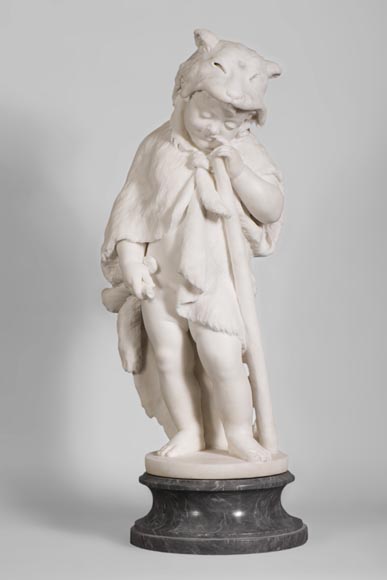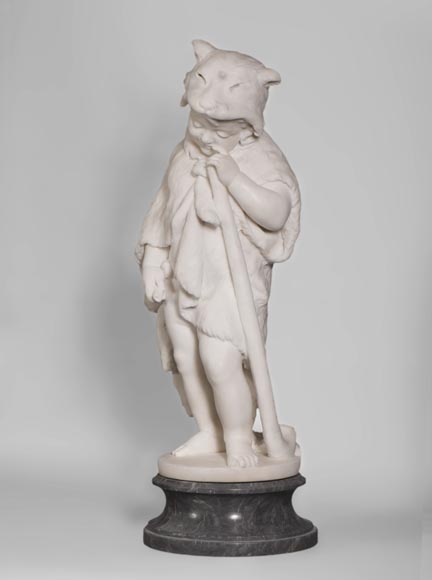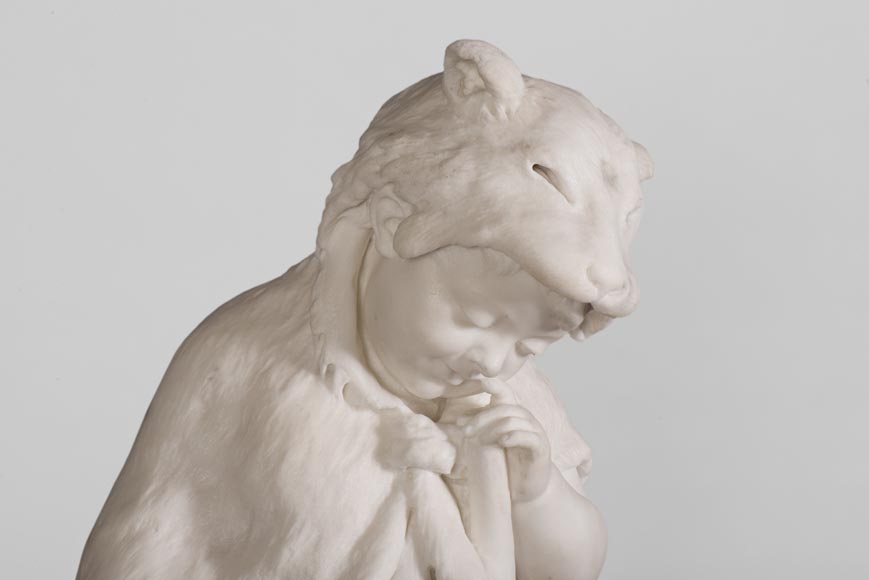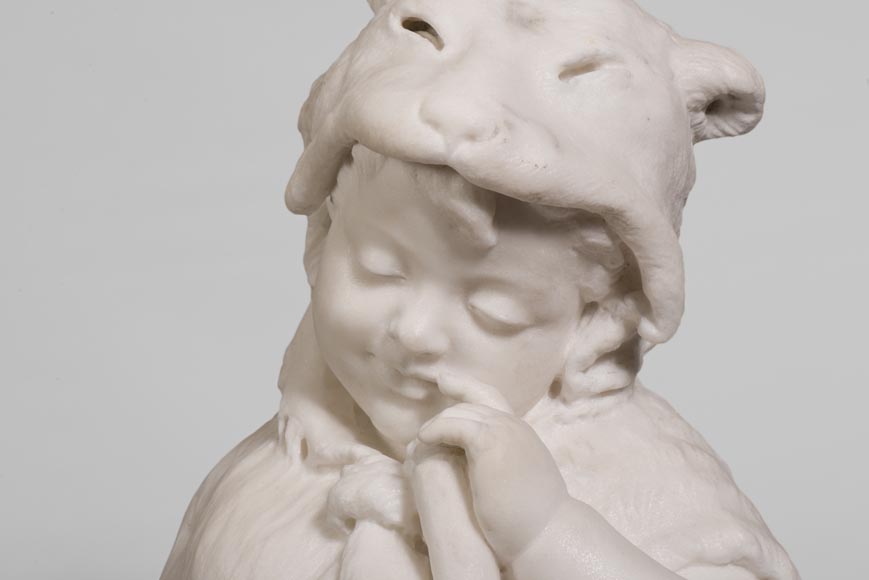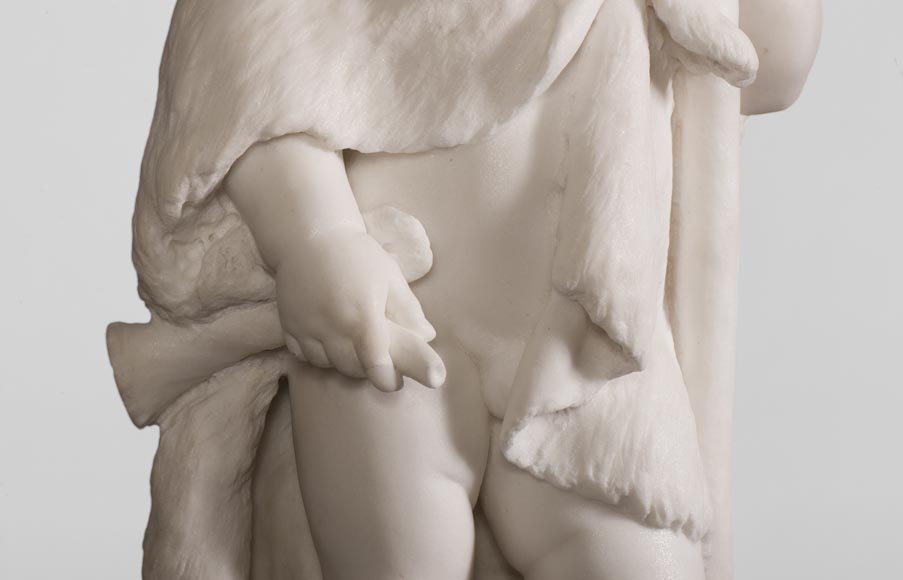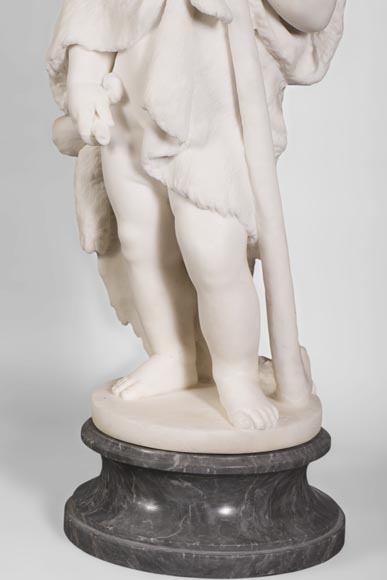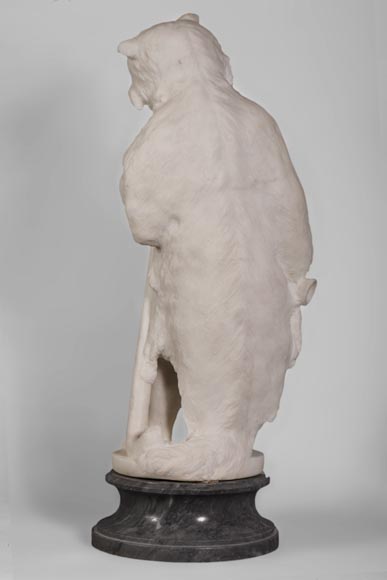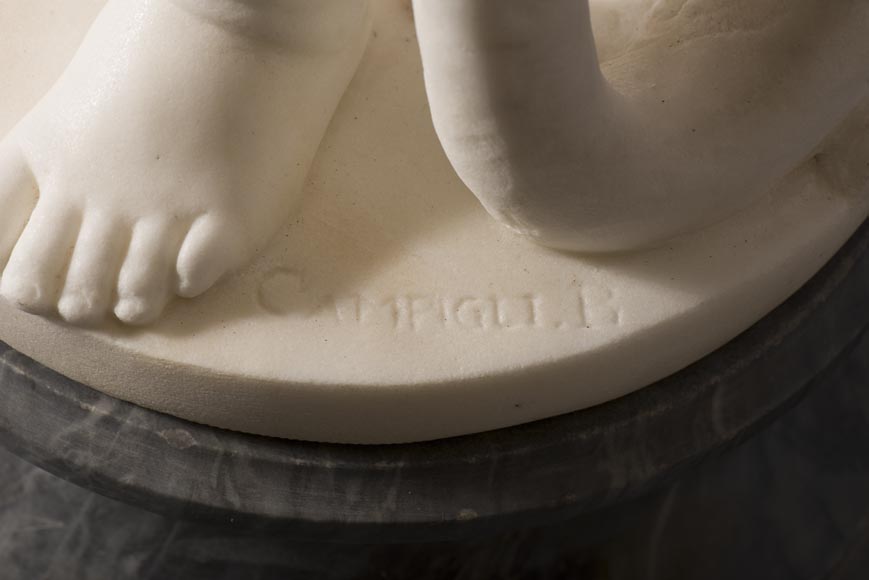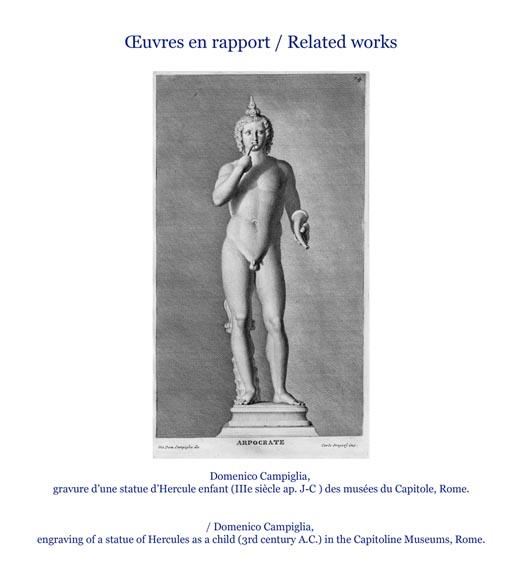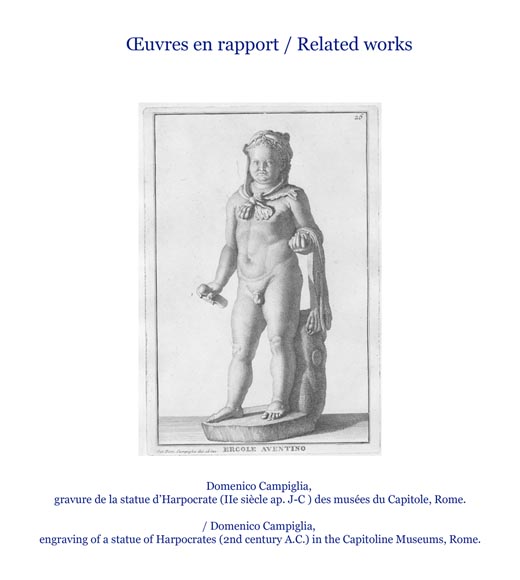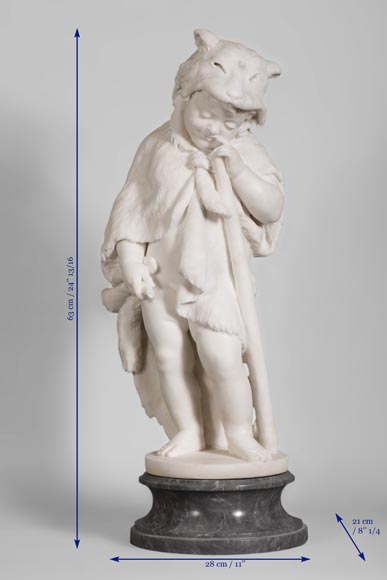Style Napoleon III / Ref.10636
"Heracles as a child", sumptuous sculpture in Statuary marble, c. 1880
Dimensions:
Width: 8'' ¼ 21cm
Height: 24'' ¾ 63cm
Depth: 8'' ¼ 21cm
Origin:
France, circa 1880.
Signed : CAMPIGLI B
Status:
In very good condition. Light restorations.
This beautiful statue, representing a child covered with a wolf skin, is based on the iconography of Hercules as a child, which dates back to the 2nd century BC, and transforms it. Hercules is indeed represented with the skin of the Nemean lion as a cloak, the legs of the beast tied around the shoulders. In these numerous Hellenistic statues, Hercules as a child also leans on his club, after the famous version of the Farnese Palace, Hercules at rest.
The little statue explicitly reproduces the iconography of Hercules as a child, having the naked child leaning on a stick, his head covered with the skin of a beast knotted on his chest. The choice of the nude and of the Carrara marble is unambiguously an affiliation with the Hellenistic statues. The theme is still very much alive at the end of the 19th century. Engraved with the inscription "Campigli B", this work was probably realized after the engravings of Giovanni Domenico Campiglia, active in Florence in the sixteenth century. Campiglia produced a series of engravings of major importance for the artists’ education, reproducing the antiques preserved at the Capitoline Museums in Rome, among which is a child Hercules.
But rather than reproducing the Hercules of the Capitol, the artist created an original work based on other engravings of Campiglia. One recognizes in particular the gesture of Harpocrates, the finger in front of the mouth to forbid to reveal the Gods’ mysteries. Harpocrates, originally the Egyptian child god Horus, was associated with the mysteries of Dionysus in ancient Greece. He was then given the horn of abundance, as well as the nebrida, the animal skin the Bacchantes wear in Dionysus’ procession.
In the syncretism that characterizes the Hellenistic period, Harpocrates has sometimes been represented with the attributes of Hercules, as in the statue of the Archaeological Museum of Antalya in Turkey. The author of our statue could thus be inspired by these syncretisms to create one himself.
The artist has changed the skin of a lion into a wolf skin, and the conquering attitude, at least alert, of child Hercules into a dreamy pose. The club of Hercules has also changed into a shepherd's crosier, for here we have a young shepherd boy, his horn in his hand, sleeping.
Greek mythology gives a great place to the shepherds, to whom it attributes the invention of poetry and song. Let us quote Endymion, lover of the Moon Semele, devoted to a perpetual sleep; And Daphnis, the child of Pan and a nymph raised by shepherds. Daphnis, represented as a shepherd, has himself been deified.
This original idea of the artist inspired him another model of the same subject, of which one terracotta copy is known, where the child has no crosier. The author is therefore more likely to have started from a representation of the Dionysian cult’s Harpocrates, to which he gave the body of a shepherd.
The character of our statue also evokes the universe of the tale, inhabited by wolves, where the children heroes face metaphorical trials. The mythological universe is prolonged in that of popular histories, in the common and modern culture of the nineteenth century. Executed around 1880, this statue reflects the growing appearance of an illustrated literature for children in the nineteenth century. Generally speaking, this century is also the year of an unprecedented interest in childhood, which gives rise to new subjects drawn from popular literature. The characters of stories and tales are immortalized in marble, as mythological characters have been.
The sculptor has fully exploited the sumptuousness of the Carrara marble, which enables, as in here, the velvety rendering of the flesh, and a subtle body that the whiteness of the marble allows to read. The wolf's skin is very neat and covers the child's body but does not erase it, and it remains palpable underneath. The child's body is perfectly faithful to that of a little child of three or four years old: the cheeks, the small nose, the legs and the slightly chubby arms bear witness of a sensitive attention to childhood.
Informations
Price: on request
Recommended for you :
Dimensions:
Width: 28
Height: 63
Depth: 24
Dimensions:
Width: 56
Height: 52
Depth: 27
Dimensions:
Width: 32
Height: 68
Depth: 15
Dimensions:
Width: 35
Height: 111
Depth: 43
Dimensions:
Width: 44
Height: 110
Depth: 33
Diameter: 33
Dimensions:
Width: 37
Height: 53
Depth: 23
Dimensions:
Width: 58
Height: 232
Depth: 72
Dimensions:
Width: 77
Height: 58
Depth: 36
Dimensions:
Width: 57
Height: 56
Depth: 36
Dimensions:
Width: 34
Height: 67
Depth: 34
Dimensions:
Width: 53
Height: 63
Depth: 25



